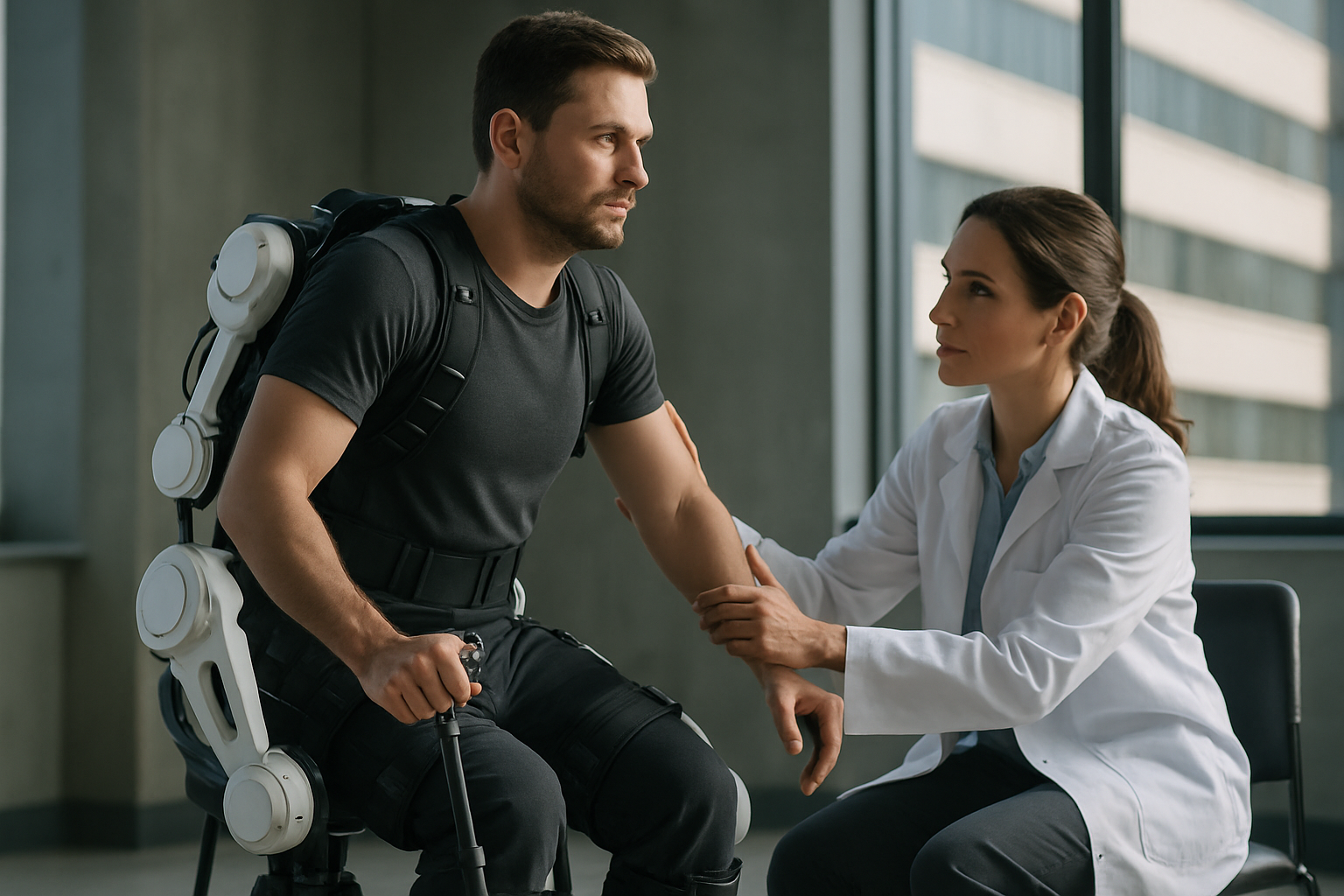Spine Surgery in the US: A Medical Option That Might Help Relieve Persistent Back Issues
Living with chronic back or neck pain? Spine surgery may be one option discussed with specialists when other treatments haven’t provided relief. Here's what to know about the process and considerations in the US. Surgeons often use advanced imaging and planning to improve precision, and recovery plans are tailored to each patient’s health profile.

Persistent back pain can significantly impact every aspect of life, from work productivity to personal relationships. While many cases respond well to non-surgical treatments, some conditions may require surgical intervention when other methods have been exhausted. Understanding the available surgical options, specialist qualifications, and treatment approaches can help patients make informed decisions about their care.
This article is for informational purposes only and should not be considered medical advice. Please consult a qualified healthcare professional for personalized guidance and treatment.
Understanding Minimally Invasive Spine Surgery Options
Minimally invasive spine surgery has transformed the field of spinal treatment over the past two decades. Unlike traditional open surgery, which requires large incisions and extensive muscle dissection, minimally invasive techniques utilize smaller incisions, specialized instruments, and advanced imaging technology. These procedures typically result in less tissue damage, reduced blood loss, shorter hospital stays, and faster recovery times. Common minimally invasive procedures include microdiscectomy for herniated discs, laminectomy for spinal stenosis, and certain types of spinal fusion. Surgeons use tubular retractors and endoscopic cameras to access the spine through small openings, preserving surrounding muscles and tissues. However, not all spinal conditions are suitable for minimally invasive approaches, and the decision depends on factors such as the specific diagnosis, severity of the condition, patient anatomy, and surgeon expertise.
Finding Qualified Back Surgery Specialists in Your Area
Selecting an experienced spine surgeon is crucial for optimal outcomes. Qualified specialists typically include orthopedic surgeons with spine fellowship training or neurosurgeons specializing in spinal procedures. When searching for local services, patients should verify board certification, which indicates the surgeon has completed rigorous training and passed comprehensive examinations. Experience matters significantly in spine surgery, so inquiring about the number of procedures performed annually and outcomes data is appropriate. Many hospitals and medical centers now publish surgeon-specific statistics on complication rates and patient satisfaction scores. Professional organizations like the North American Spine Society maintain directories of qualified specialists. Patients should also consider seeking second opinions, particularly for complex cases or when surgery recommendations differ from initial consultations. Referrals from primary care physicians, physical therapists, or trusted healthcare providers can help identify reputable surgeons in your area.
Advanced Herniated Disc Treatment Approaches
Herniated discs occur when the soft inner material of a spinal disc pushes through the outer layer, potentially compressing nearby nerves and causing pain, numbness, or weakness. While many herniated discs heal with conservative treatment, surgical intervention may be necessary when symptoms persist or worsen. Microdiscectomy remains the most common surgical approach, involving removal of the herniated portion while preserving the rest of the disc. This procedure typically takes one to two hours and often allows same-day or next-day discharge. Endoscopic discectomy represents an even less invasive option, using a small camera and instruments inserted through a tube. Artificial disc replacement is another alternative for certain patients, replacing the damaged disc with a prosthetic device that maintains motion at that spinal segment. The choice of procedure depends on disc location, extent of herniation, presence of other spinal conditions, and patient-specific factors. Success rates for herniated disc surgery generally range from 85 to 95 percent for appropriate candidates, though outcomes vary based on individual circumstances.
Modern Spinal Fusion Options and Technologies
Spinal fusion permanently joins two or more vertebrae to eliminate motion between them, addressing conditions like degenerative disc disease, spondylolisthesis, spinal instability, or deformities. Modern fusion techniques have evolved considerably, incorporating advanced materials and approaches. Interbody fusion places a cage or graft between vertebrae, providing structural support while bone grows to create a solid connection. This can be performed from anterior (front), posterior (back), lateral (side), or transforaminal (angled) approaches, each offering specific advantages depending on the condition. Bone grafts may come from the patient’s own body, donor tissue, or synthetic materials that promote bone growth. Instrumentation like screws, rods, and plates stabilizes the spine during healing. Newer technologies include expandable cages, 3D-printed implants customized to patient anatomy, and biologics that accelerate fusion. Minimally invasive fusion techniques reduce tissue trauma compared to traditional open procedures. Recovery from spinal fusion typically requires several months, with fusion completion occurring over six to twelve months. Success rates vary by technique and condition but generally range from 70 to 90 percent.
Evaluating Spine Surgery Centers and Specialists
Choosing the right facility and surgical team significantly influences outcomes. Accredited spine centers demonstrate commitment to quality standards through certifications from organizations like The Joint Commission or specific spine program accreditations. High-volume centers typically achieve better outcomes due to greater experience with complex cases and established protocols. When evaluating facilities, consider available technology, multidisciplinary team composition, rehabilitation services, and patient support programs. Quality metrics to review include infection rates, readmission rates, complication rates, and patient satisfaction scores. Many facilities now participate in national registries that track outcomes, providing transparency about surgical results.
| Evaluation Factor | What to Look For | Why It Matters |
|---|---|---|
| Surgeon Credentials | Board certification, fellowship training, years of experience | Ensures proper training and expertise |
| Hospital Volume | Number of spine procedures performed annually | Higher volumes often correlate with better outcomes |
| Technology Access | Advanced imaging, navigation systems, minimally invasive capabilities | Enables precise, less invasive procedures |
| Multidisciplinary Team | Pain specialists, physical therapists, care coordinators | Comprehensive approach improves recovery |
| Outcome Transparency | Published complication rates, patient satisfaction data | Allows informed facility comparison |
Prices, rates, or cost estimates mentioned in this article are based on the latest available information but may change over time. Independent research is advised before making financial decisions.
Patients should schedule consultations with multiple specialists when considering spine surgery, asking detailed questions about recommended procedures, expected outcomes, potential risks, and recovery timelines. Understanding insurance coverage, obtaining pre-authorization, and clarifying out-of-pocket costs before proceeding is essential. Many facilities offer financial counselors who can explain coverage and payment options.
Spine surgery represents a significant medical decision that should be made collaboratively between patients and qualified healthcare providers. While surgical techniques continue advancing, offering improved outcomes and faster recoveries, surgery carries inherent risks and is not appropriate for every back pain situation. Thorough evaluation, conservative treatment trials, second opinions, and careful specialist selection all contribute to optimal results. When persistent back issues significantly impair quality of life and non-surgical approaches have been exhausted, modern spine surgery may provide meaningful relief and functional improvement for appropriately selected patients.




